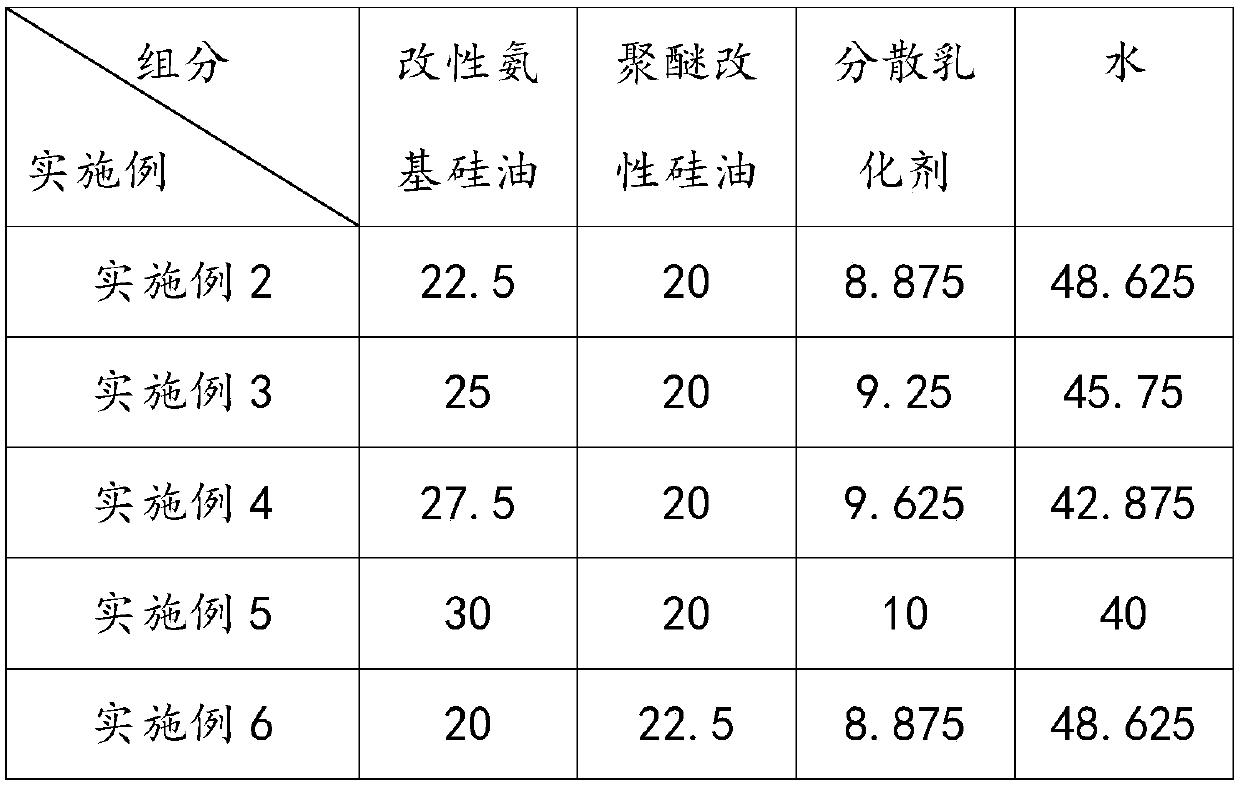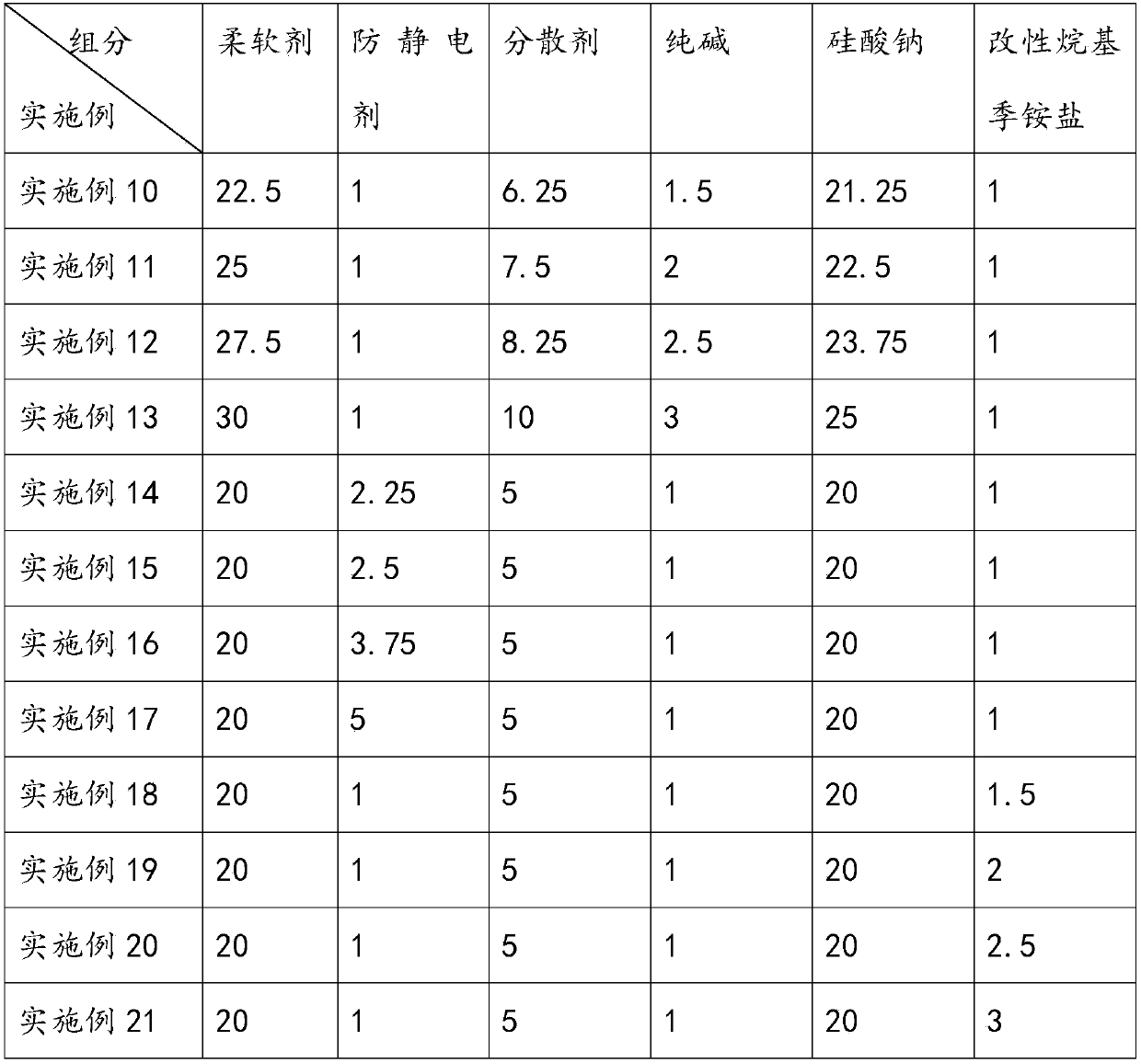Radiation-resistant fabric preparation process
A production process and anti-radiation technology, which is applied in the field of production process of anti-radiation fabrics, can solve the problems of single function of fabrics and inability to meet the needs
- Summary
- Abstract
- Description
- Claims
- Application Information
AI Technical Summary
Problems solved by technology
Method used
Image
Examples
Embodiment 1
[0030] Pre-treatment of polyester and flax fiber: (1) Configure softener: Mix 20% of modified amino silicone oil, 20% of polyether modified silicone oil, 10% of dispersing emulsifier and 50% of water at a temperature of 85°C;
[0031] (2) Enzyme treatment solution is configured: 8 parts of cellulase, 8 parts of phosphate anionic surfactant, 60 parts of polyethylene glycol type nonionic surfactant and 5 parts of dilute sodium hydroxide pH regulator are mixed evenly, And adjust the temperature of the mixed solution to 30°C;
[0032] (3) Configure the second auxiliary agent: mix 20 parts of softening agent, 1 part of antistatic agent, 5 parts of dispersant, 1 part of soda ash, 20 parts of sodium silicate, and 1 part of modified alkyl quaternary ammonium salt;
[0033] (4) Enzyme treatment of polyester and flax fibers: first put the polyester and flax fibers into the enzyme treatment solution, keep the temperature constant, and perform enzyme treatment for 30 minutes, then remove ...
Embodiment 30
[0049]The difference from embodiment 30 to embodiment and embodiment 33 is: the composition of enzyme treatment liquid is as follows in parts by weight:
[0050]
[0051] The difference between Example 34 to Example 37 and Example 1 is that the temperature of the enzyme treatment solution is as follows: unit °C
[0052]
PUM
 Login to View More
Login to View More Abstract
Description
Claims
Application Information
 Login to View More
Login to View More - R&D
- Intellectual Property
- Life Sciences
- Materials
- Tech Scout
- Unparalleled Data Quality
- Higher Quality Content
- 60% Fewer Hallucinations
Browse by: Latest US Patents, China's latest patents, Technical Efficacy Thesaurus, Application Domain, Technology Topic, Popular Technical Reports.
© 2025 PatSnap. All rights reserved.Legal|Privacy policy|Modern Slavery Act Transparency Statement|Sitemap|About US| Contact US: help@patsnap.com



